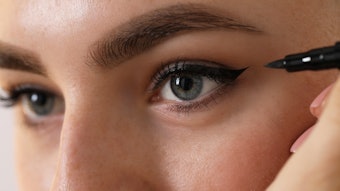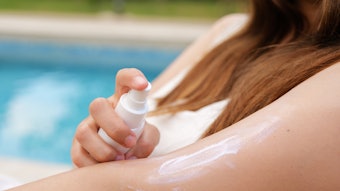I finally grabbed the letter-size envelope that had been sitting in my mail slot for a week. They’re usually solicitations to sign up for something, and I usually deposit them in the trash without opening them. (Although you’ll have to remind me to tell you about the letters from prison inmates we receive once in a while. There are a surprising number of men in the U.S. penal system interested in a career in cosmetics.) But for some reason—I think, maybe, the lack of clues on the envelope was intriguing—I opened this lonely letter when I got back to my desk. It was a discounted offer for a genome service promising me a way to understand my DNA.
First of all, mail-order DNA assessment? Pffft (that’s as close as I can come to writing my dismissive scoffing sound). Second, I’m not sure I want to open that can of worms—there’s already enough about myself on a much less microscopic level to be sussed out. But I wonder, am I being sensible about this, aside from the mail order part, or am I simply unable to believe or accept that this, including its ramifications and outcomes, exists as viable science? In a sense, I think we as consumers, and in general, have a line that we’ve drawn with science. I can’t define it, and it may move depending on the application, but once we sense it’s been crossed, our suspicions and doubt grow exponentially—even when the science is solid and proven. And the beauty industry, even as it pushes and embraces science, often has its own reservations—probably targeted squarely on the implications of the science.
In the October 2013 issue of GCI sister publication Cosmetics & Toiletries, editor Rachel Grabenhofer refers to Maison G. deNavarre’s discussion in the January 1973 edition of Cosmetics & Toiletries (at that time, Cosmetics and Perfumery) about “bioactive” or “chemical” cosmetics. Here, deNavarre reviewed a 1972 report by E. Elmy of Dragoco, writing “[he] uses such euphemisms as: eudermic, cutaneous bioactivators, dermatophilic, ... bioactive, microergic, trophic factors, phytocytes [and] epidermic phenomenology... Well! Indeed, the use of [these phrases] on the labeling of cosmetics would quite probably bring down the FDA for [want of] explanations.”
“It’s amazing how, at that time, these concepts seemed ‘ephemeral,’ as deNavarre put it, but in fact they predicted the future—take plant stem cells, for example,” writes Grabenhofer. “Thus, while Elmy was ‘poeticizing,’ as deNavarre wrote, these fantasies became realities some 40 years later.”
My points in all this? First, there are constants in this world, and there are things that constantly change. Consumer interest in mitigating the signs of aging is a constant; technology constantly evolves.
deNavarre was among the pioneering minds in cosmetic science, but in his statements there seems to be both a reluctance for and warning against pushing science too far—or at least chiding that the industry must not say where and how it’s applying science too loudly—and I think the same dichotomy still exists. The science, technologies and ingredients (and the minds behind them) are incredible and are doing amazing things in cosmetics. And although I’ve seen and heard the great pride behind these innovations, I’ve also heard admonition about crossing the line into where cosmetics become drugs, i.e., will be subjected to more regulatory scrutiny and dictates.
So my second point: we’ve got to face this as a likely reality. Whether it’s my personal apprehension or disbelief of the science available and applicable to me or the industry’s reluctance to cross a line that changes paradigms and brings with it all new implications to what cosmetics are, the science is there.










